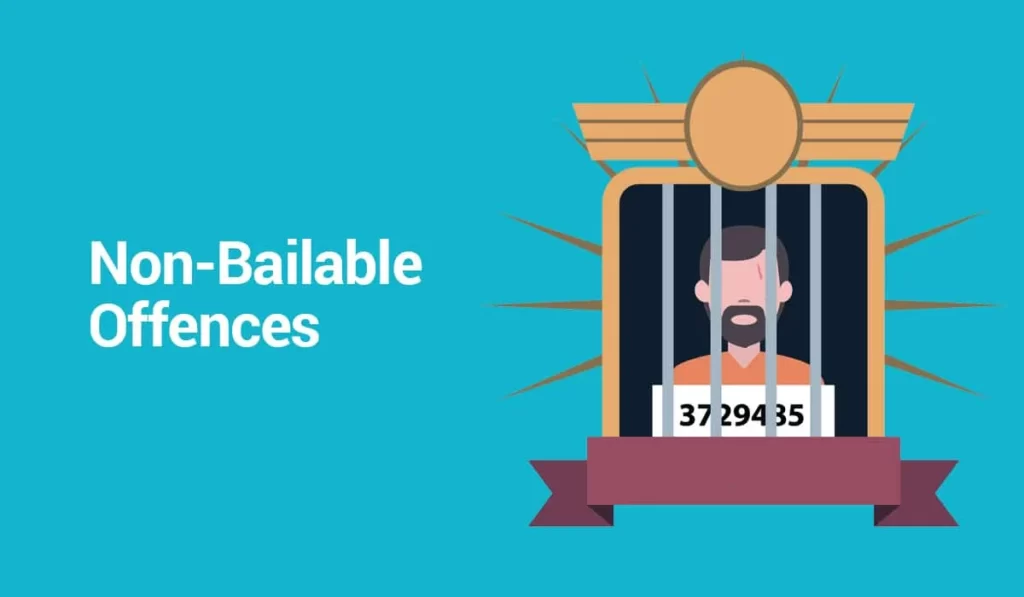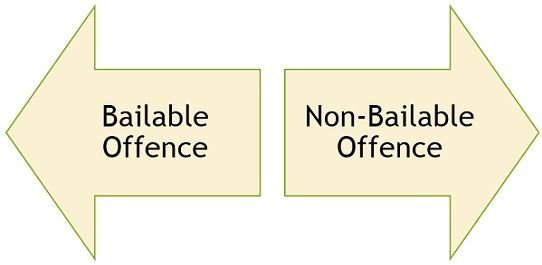What are Bailable and Non Bailable offences: In the majority of nations around the world, including India, bail is an essential component of the criminal justice system. Infractions are divided into compoundable, non-compoundable, bailable, and non-bailable categories in the Indian Penal Code, 1860. If a person commits any offence then, he/she will be held liable for the particular offence which could be bailable or non bailable.
For the Web-Story of this Article "Click Here“.
An offence whether to be bailable or non bailable is mentioned in the Indian Penal Code which will be replaced by Bharatiya Nyaya Sanhita Bill, in coming future. Offences that are eligible for bail are those for which releasing a person from a prison cell is a question of justice. Simply put, it indicates that bail can be requested as a privilege without restriction.
Whereas bail is a matter of discretion for offences that are not bailable. To determine whether to issue bail or not in certain situations, the judge carefully considers the relevant facts and other criteria.
What is an offence? (What are Bailable and Non Bailable offences?)
Definition of an offence: Offence includes any act for which a complaint may be filed under section 20 of the Cattle-trespass Act, 1871, and includes any act or omission made punishable by any legislation currently in effect.
An offence is any behaviour that is deemed illegal by any law. Any action that violates another person’s rights, injures them, or has an adverse effect on society as a whole is illegal.
Definition of bail:
A person who posts bail is legally released from custody since they promise in writing to appear in court even though they are not actually in custody.
Although the CRPC does not define bail, in general, bail is an arrangement in which a person promises in writing to come before the court as needed and to abide by any terms outlined in the agreement. If such person violates any of the terms and circumstances of the agreement, he guarantees forfeiture of a certain amount of money.
Bailable offence is Defined as:-
Bailable offences are those that have been designated as such in the First Schedule or that are made so by any other currently in effect statute, according to Section 2(a) of the Criminal Procedure Code. The first schedule of the CrPC is broken up into two sections, the first of which deals with crimes listed under the IPC and the second of which deals with crimes listed under other laws.
According to the First Schedule’s final item, a crime must only be penalised by a fine or a sentence of less than three years in jail in order to qualify for bail. Simple injury (Section 337; IPC), bribery (Section 171E; IPC), and public nuisance (Section 290; IPC) Death by rash or Negligent Act(section 304A ;IPC)are a few of the typical crimes that are subject to bail.
In Simple terms, Offences that are eligible for bail are those that are not particularly serious in nature. Bail is a legal requirement in these situations, and the person who has been arrested should be freed after posting bail with the police.
In such circumstances, the police have the authority to give bail. If a “surety bond” is executed, the accused may be freed on bail with or without the provision of the surety sum. Any person who is detained without a warrant is prepared to appear in court at any time.
Right to be released on bail
Based on CrPC Section 50 When someone is detained without a warrant, it is the responsibility of the police officer to explain the whole nature of the crime for which the detainee is being held. Additionally, if the crime for which the person is detained qualifies for bail, it is the police’s responsibility to advise the suspect that he is eligible for release on bond after posting a surety.
According to Section 436 of the Criminal Procedure Code, anyone detained without a warrant on suspicion of a crime for which bail is allowed and who is willing to post bail will be freed on bail.
The Court or the officer has the authority to set the bail amount.
Non Bailable Offences:-
A crime that is not subject to bail is known as a non-bailable offence in India. These major charges carry a maximum sentence of three years in jail. Crimes including rape, murder, human trafficking, kidnapping, counterfeiting, and terrorism are examples of non-bailable offences.

No crime in India that carries a death sentence or a life sentence is subject to a bail hearing. A non-bailable offence typically gives the court the authority to grant bail to the accused, but only after carefully reviewing the case’s facts and circumstances. Even after taking into account all the evidence, the court may in some circumstances refuse to issue bail.
Non-Bailable Offence Definition:
Non-bailable offences are those that are not listed as bailable offences in the First Schedule, according to Section 2(a) of the CrPC. Further, the First Schedule’s Second section at the conclusion defines a non-bailable offence as one that carries a death penalty, a life sentence, or a sentence of more than seven years in prison.
The court may typically deny bail in the following circumstances:
If the “Bail Bond” is not properly completed, the crime was one that carries a death or life sentence, such as “Murder” or “Rape,” the accused has made an attempt to elude justice, or his credit is in question, one of these situations may apply.

If the accused had previously been found guilty of a crime carrying a sentence of death, life in prison, or seven or more years in prison, or if he had been found guilty of two or more crimes carrying sentences of three or more years in prison, he would not be eligible for release on bail.
Some Non-Bailable Offence Examples are: –
- IPC Section 302: Murder
- IPC Section 304-B: Dowry Death
- Attempt at murder (Section 307 IPC)
- Voluntarily causing grievous hurt (Section 326) IPC
- IPC Rape (Section 376), Kidnapping (Section 363), etc.
Bail in non-bailable offences
The process for bail in offences that are not bailable is outlined in Section 437 of the Code of Criminal Procedure. The word “may” appears more than twice in the aforementioned clause when read generally, which leads us to the conclusion that the decision to grant bail in circumstances of non-bailable charges rests fully with the court of law. In Pramod Kumar Maglik v. Saihna Rani (1989), it was decided in a similar manner that “the term’may’ denotes the discretion of the court.”
When granting bail, the court has discretion, but the law will serve as its guide. Because of the following guidelines:
- If there are good reasons to believe that the person has received the death penalty or life in prison, they cannot be released.
- If the crime was a cognizable one, they cannot be released if they have previously received a death sentence, a life sentence, or a sentence of seven years or more in prison, or if they have been found guilty twice or more of both a cognizable offence and a non-bailable offence.
Anticipatory Bail in Non Bailable Offence:
A person may apply for bail under Section 438 of the CrPC to the High Court or Court of Session if they are concerned that they may be arrested on suspicion of a crime for which there is no possibility of a bond. The Court may, in its discretion, grant bail, subject to a number of requirements, including that the defendant:
- 1. Whenever necessary, make himself available for questioning by police officers.
- 2. Not offer any enticement, threat, or promise to someone in an effort to dissuade them from telling the court or a police officer any relevant information.
- 3. Refuse to depart from India without the court’s prior approval.
Anticipatory Bail Procedure:
The accused must fill out Form No. 45 provided in the First Schedule and submit a bail application in order to request release under Section 437 or Section 438 of the CrPC. After that, the Court will decide whether to accept or deny the bail application at its discretion.
Conclusion
In India, the idea of bail has undergone numerous iterations of dynamic change. The law of bail has evolved over time, and the Supreme Court of India has been integral to this process.
The purpose of bail is not to free an accused person; rather, it is to release him from detention, either on his own personal bond or after receiving the sureties’ assurance that the accused would not elude justice and that they would be required to appear on his behalf before the court.
Crimes are categorised or, more accurately, separated into bailable and non-bailable offences based on the severity of the crime. Bail is available for less serious crimes, but not for significant offences.